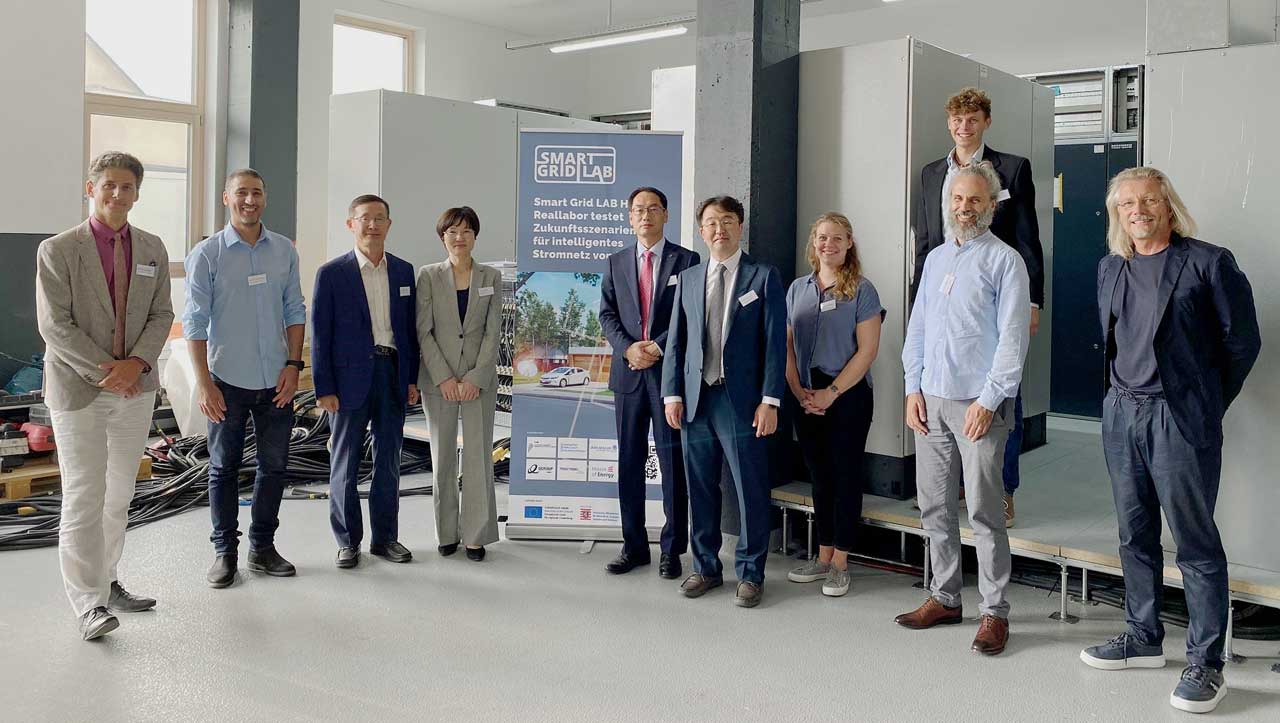After an introduction by Prof. Dr. Peter Birkner (House of Energy e.V.) on the German energy strategy based on renewable energy sources, the future role of electricity and the interplay between the legal framework and the business case for specific technologies, there was a lively exchange about the challenges of integrating renewable energies from the perspective of distribution and transmission grid operators. Vanessa Schuller (Syna GmbH) explained the situation of the distribution grid operators, with special attention paid to the redispatch applied in Germany, which regulates interventions in the generation capacity of power plants to counteract grid overload.
Dr. Luca Pizzimbone (Tractebel) and Matthias Pfeffer (Pfeffer Engineering) presented technologies for smart grids from the consortium of the Smart Grid LAB Hessen project and Prof. Dr. Athanasios Krontiris (Darmstadt University of Applied Sciences) gave an overview of the overall project and the issues addressed through it. The project is supported by EU EFRA funds from the federal state of Hesse.
Following the presentations and discussions, the Smart Grid Lab Hessen was visited, which will soon start its research operations. Pictured above (from left:
Prof. Dr. Athanasios Krontiris (Hochschule Darmstadt), Hassan Abouelgheit (Tractebel), Youngsung Kim (Director of Research Center, Korea Electric Power Research Institute), Seon-Ah Kim (Managing Director, VDE GS Korea), Chang-Hoon Shin (Director General of Smart Power Distribution Lab, KEPCO), Seongchul Kwon (Principal Research of Smart Power Distribution Lab, KEPCO), Vanessa Schuller (Syna GmbH), Till Neukamp (Hochschule Darmstadt), Dr. Luca Pizzimbone (Tractebel) und Matthias Pfeffer (Pfeffer Engineering). Not pictured: Prof. Dr. Peter Birkner (House of Energy), Sophia Pfeffer (Pfeffer Engineering).
In the hardware-in-the-loop lab, smart grids are examined holistically from different perspectives. All energy sources and consumers are simulations of real-world examples. As part of the scenarios developed in the project, various topologies can be modelled and challenging grid situations safely tested in a real-world environment without danger.
